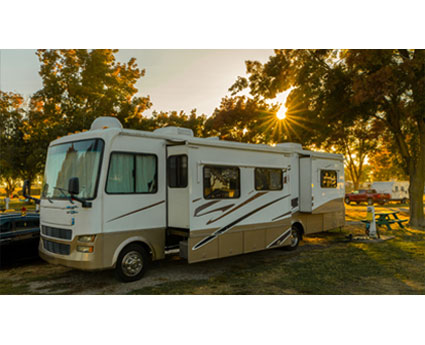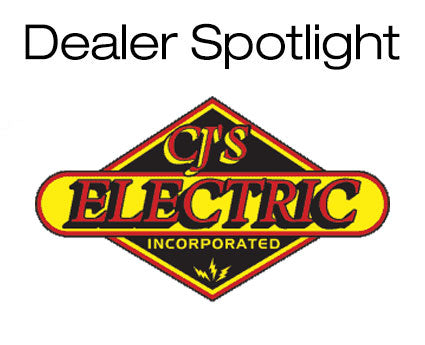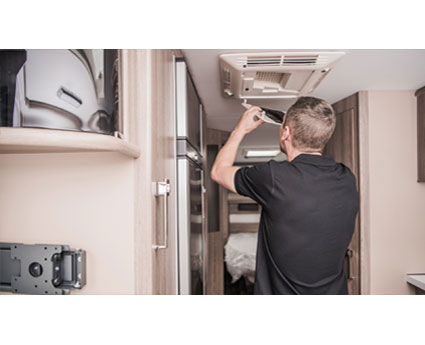What Size Generator Do I Need to Run My Central AC?
A generator’s size depends on your AC’s tonnage and its startup load, not just the running watts. For example, a 2-ton central AC may only need around 3,480 running watts, but the startup surge can spike up to 8,500 watts for a few seconds. That short burst is the reason many homeowners feel pressured to buy a much larger (and more expensive) generator than they truly need.
A soft starter changes that equation by reducing the startup surge. With a soft starter, the startup surge on a 2-ton central AC could be reduced from 8,500 to 3,600. This allows your AC to start smoothly and safely, even on a smaller generator.
In this article, we’ll walk through:
- What whole-home surge protection really covers (and what it doesn’t)
- How AC power requirements work in simple, non-technical terms
- How to calculate the right generator size for your home
- How a soft starter helps you use a smaller, more affordable generator
- The difference between a soft starter and a hard start kit
- The hidden benefits for storm-prone homes
Understanding Residential AC Power Requirements
When we talk about how much power your central AC needs, you’ll hear terms like watts, amps, and BTUs. Here’s a simple way to think about it:
-
BTUs = Cooling power
-
Watts = Electricity needed to power the AC
-
Amps = The “flow” of electricity the AC pulls when running
All central AC units require two wattage numbers:
-
Running Watts – The electricity needed to keep the AC running
-
Starting Watts – The “surge” needed to start the compressor
The starting watts are the tricky part. The compressor demands a big burst of power to get going. This burst only lasts 1–3 seconds, but it can be 3–5x higher than the running watts. This is why homeowners are often told to buy a much larger generator than they expect.
What Affects How Much Power Your Central AC Needs?
A few key factors influence how much power your AC will require:
-
AC Tonnage – A 3-ton unit will always need more power than a 2-ton unit.
-
Age & Efficiency – Older systems tend to be “hungrier” and pull more amps.
-
Voltage (120V vs 240V) – Most central AC units run on 240V circuits.
-
Other Home Loads – Lights, the fridge, Wi-Fi, sump pump, and chargers all add demand when the generator is running.
Quick tip for homeowners: The best place to get exact numbers is your AC’s nameplate or manual. It will give you the running amps or watts needed.
How to Calculate the Right Generator Size for Your Home AC
To calculate the right size generator for your central AC, here’s the simplest method:
-
Find your AC’s running and starting wattage
-
Add the wattage for essential appliances you’ll want running during an outage
-
Add a 20% safety buffer for unexpected power swings
-
Choose a generator that meets (or slightly exceeds) that total wattage
Use the table below to determine what size generator you need for your home AC:
Please note:
* Amps will vary by manufacturer and model family. These are only average estimates.
** Generator size is rated running watts, assuming starting watts are about 1.4 times more. The minimum generator size also assumes there are no other significant household loads running when the compressor tries to start.

The starting surge is usually the biggest limiting factor. And, it’s the reason most homeowners believe they need a very large generator. This is exactly where a soft starter makes a noticeable difference.
How a Soft Starter Reduces the Generator Size You Need
A soft starter is a small device that helps your AC start gently instead of all at once. Instead of that powerful “kick on” surge, it slowly ramps the compressor up to speed.
Micro-Air’s EasyStart™ Flex home AC soft starter reduces the AC’s startup current by up to 75%.
What does that mean for your family?
- A 4-ton AC that usually needs a 17,000-watt generator could run on a 7,100-watt generator with a soft starter.
- Smaller generators are less expensive, quieter, and much easier to store.
- During a storm or power outage, you won’t need to worry about tripping breakers every time the AC cycles on.
For homes relying on backup generators, that reduction is a game changer. This is not just because of the cost savings, but also for comfort and peace of mind.
Learn more about the Micro-Air EasyStart™ Flex.
What is the Difference Between a Soft Starter vs Hard Start Kit?
Here’s the short and simple explanation:
-
Hard Start Kits give the compressor a quick jolt to “force start” it faster.
-
Soft Starters manage and reduce the startup current to protect the AC and ease the power load.
A hard start kit might help an aging compressor kick on, but it does not reduce the startup surge. A soft starter does and it protects the system’s electronics at the same time.
Hard start = “push it harder.”
Soft starter = “start it smarter.”
Now, here’s why that difference actually matters for homeowners relying on generators:
A hard start kit is a short-term assist, it gives the compressor a boost, but the full surge still hits your generator and electrical system. If you’re running on backup power during a storm, that surge can be enough to trip breakers or overload a smaller generator.
A soft starter, on the other hand, changes the entire startup behavior of your AC. By lowering the inrush current by up to 75%, it keeps the startup smooth, controlled, and generator-friendly. This not only prevents annoying shutdowns during outages, but also reduces wear and tear on your compressor, helping it last longer.
Think of it this way:
- A hard start kit helps your AC “muscle through” a tough start.
- A soft starter helps your AC “work efficiently and protect itself” every time it turns on.
Hard start kits can be useful in very specific cases. However, soft starters provide long-term protection, smoother performance, and are the better option for homes using backup generators or solar systems.
Benefits of Soft Starters for Storm-Prone Homes
Storms come, power goes, and that’s when startup surges matter most. A soft starter keeps your AC from demanding a huge burst of power all at once, which means:
- Your generator can handle the AC without overload, even if it’s a smaller, quieter, more fuel-efficient unit.
- Breakers don’t trip during startup surges, so the system stays online when you need it.
- The compressor experiences less stress, helping extend equipment life and reduce repair risk.
Why Micro-Air for Home Backup Power or Solar?
Micro-Air’s EasyStart™ is engineered as a long-term, electronics-safe solution for residential HVAC systems. It reduces inrush current (up to 75%) and smooths startup to protect control boards, thermostats, and connected smart devices. Homeowners using backup generators or solar + batteries appreciate that EasyStart works perfectly with inverter generators and modern inverters—delivering consistent, gentle starts instead of noisy power spikes.
With built-in Bluetooth connectivity, EasyStart Flex™ gives homeowners complete visibility and control. Using the free EasyStart app (available for iPhone and Android), users can:
-
Diagnose and correct issues safely without disassembling components.
-
Submit technical support requests directly through the app for faster troubleshooting.
-
Re-teach EasyStart to a new AC or heat pump using a simple, one-touch transfer process.
-
Install on-demand firmware updates for the latest performance improvements.
These smart Bluetooth features make setup, maintenance, and updates simpler than ever—offering homeowners peace of mind and real-time insight into their system’s health.
Made, tested, and supported in the USA, our home AC soft starter is built for real-world reliability with clear status LEDs, a weather-resistant design, and responsive, real-person support. Many customers tell us their AC now starts “without the lights dimming” and that they were able to downsize their generator requirement for emergency use—translating into lower cost, less noise, and fewer headaches during outages.
Choose the Right Generator Size for Your Home AC and Make it Work Smarter!
At the end of the day, choosing the right generator comes down to knowing your AC’s running watts, its starting watts, and your family’s comfort needs during an outage.
But here’s the part many homeowners don’t realize:
A soft starter can reduce that starting surge, allowing a smaller generator to do the job safely.
Right-sizing your generator not only saves money but also reduces fuel use, noise, and stress. This is especially important when you’re dealing with days without power.
When Does It Make Sense to Invest in a Soft Starter?
If you’re not sure whether a soft starter is worth it for your home, here are the most common situations where homeowners say it made a real difference. If you:
- rely on a portable or mid-size generator
- have pets at home during outages
- experience frequent brownouts
- live where summers are brutally hot
If any of these apply to you, a soft starter can take a lot of stress off both your generator and your AC system. Many homeowners tell us the peace of mind alone is worth it.
Want to explore whether a soft starter or surge protection could make your home setup more reliable during outages? Micro-Air designs and supports smart comfort solutions built right here in the USA. Our team is always happy to help with questions about our products.
Learn more about the EasyStart™ Flex Home AC Soft Starter.
Helpful Links:
Note: This article is for informational purposes only; Micro-Air does not make recommendations or provide support outside of Micro-Air products.




